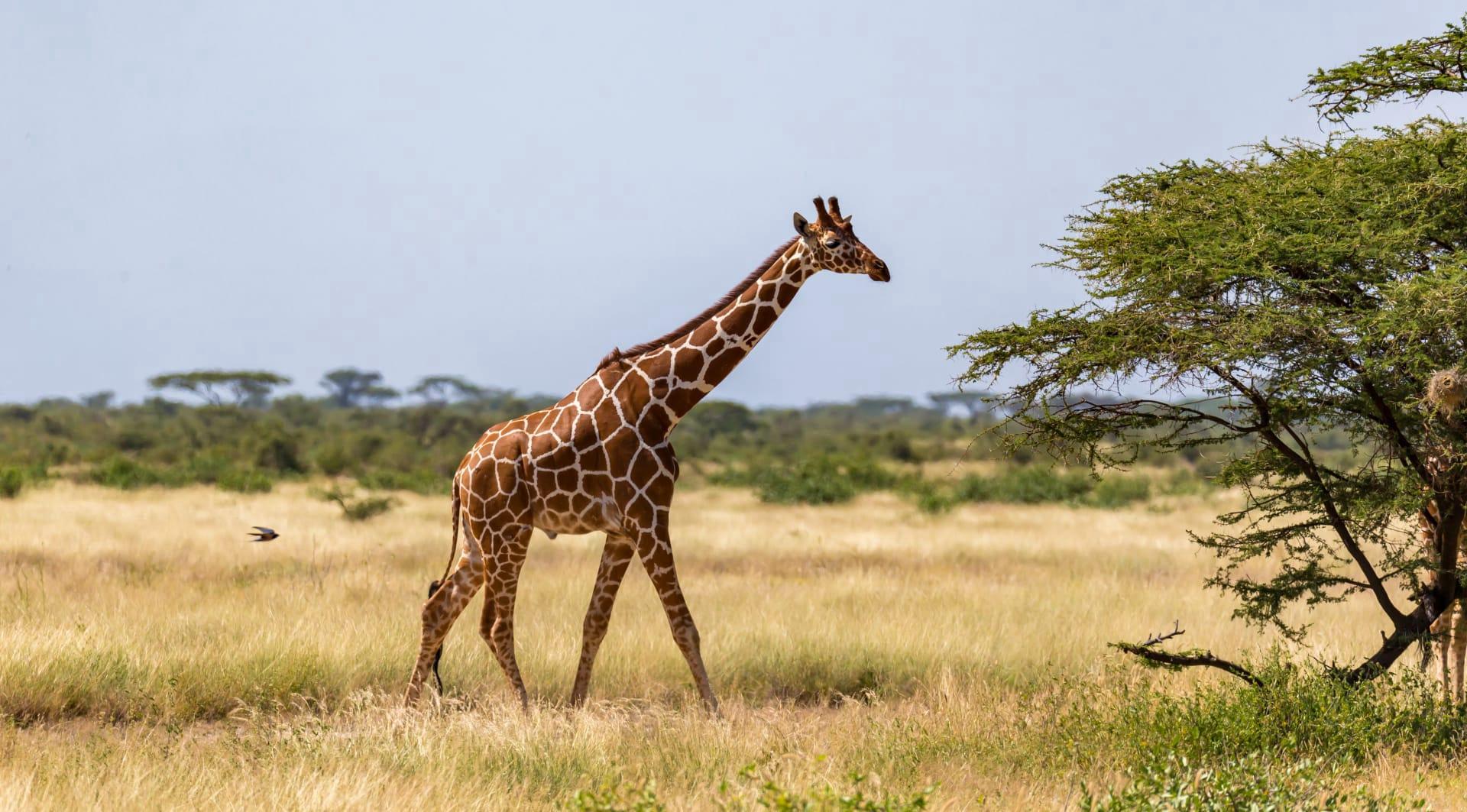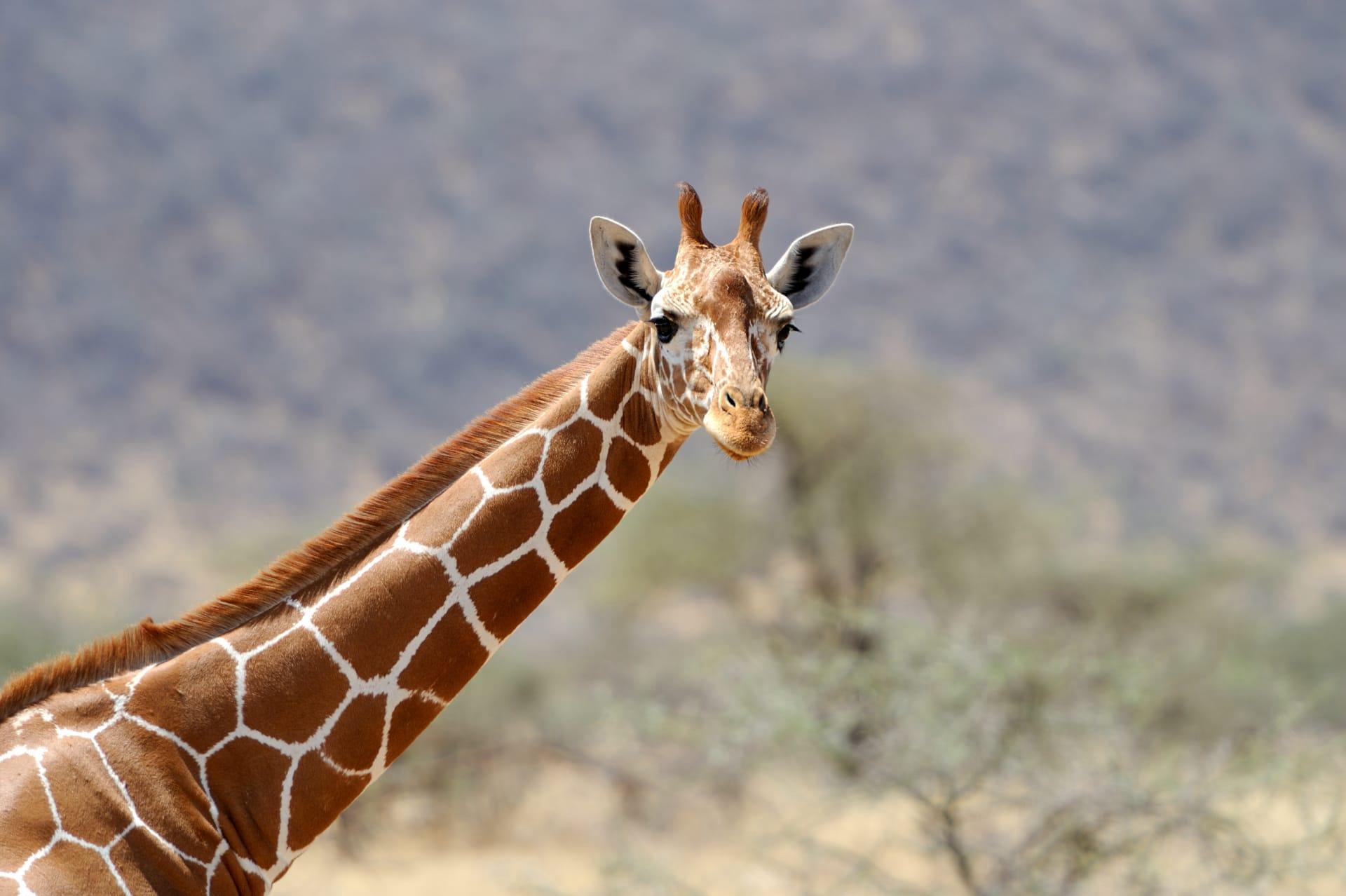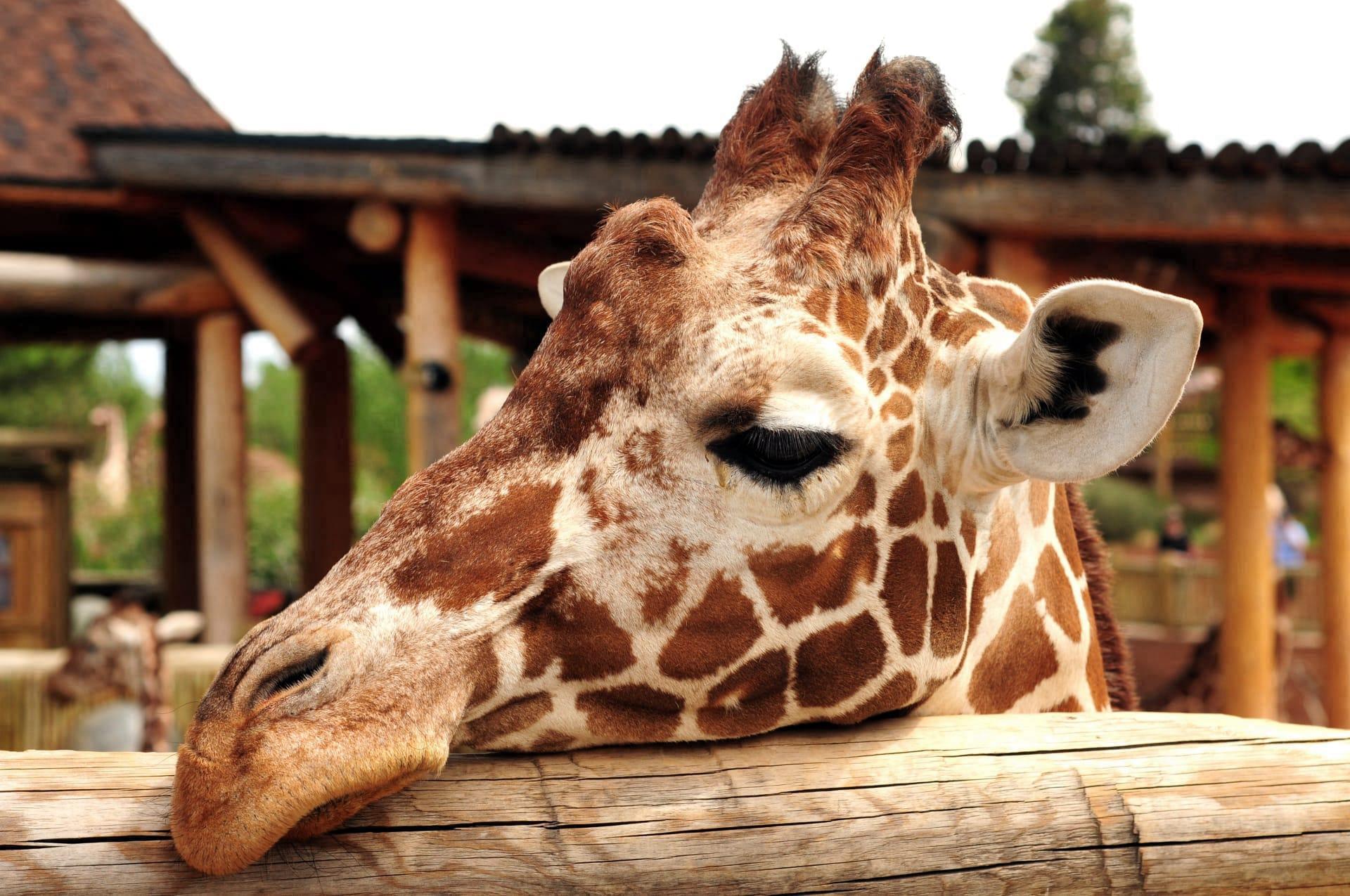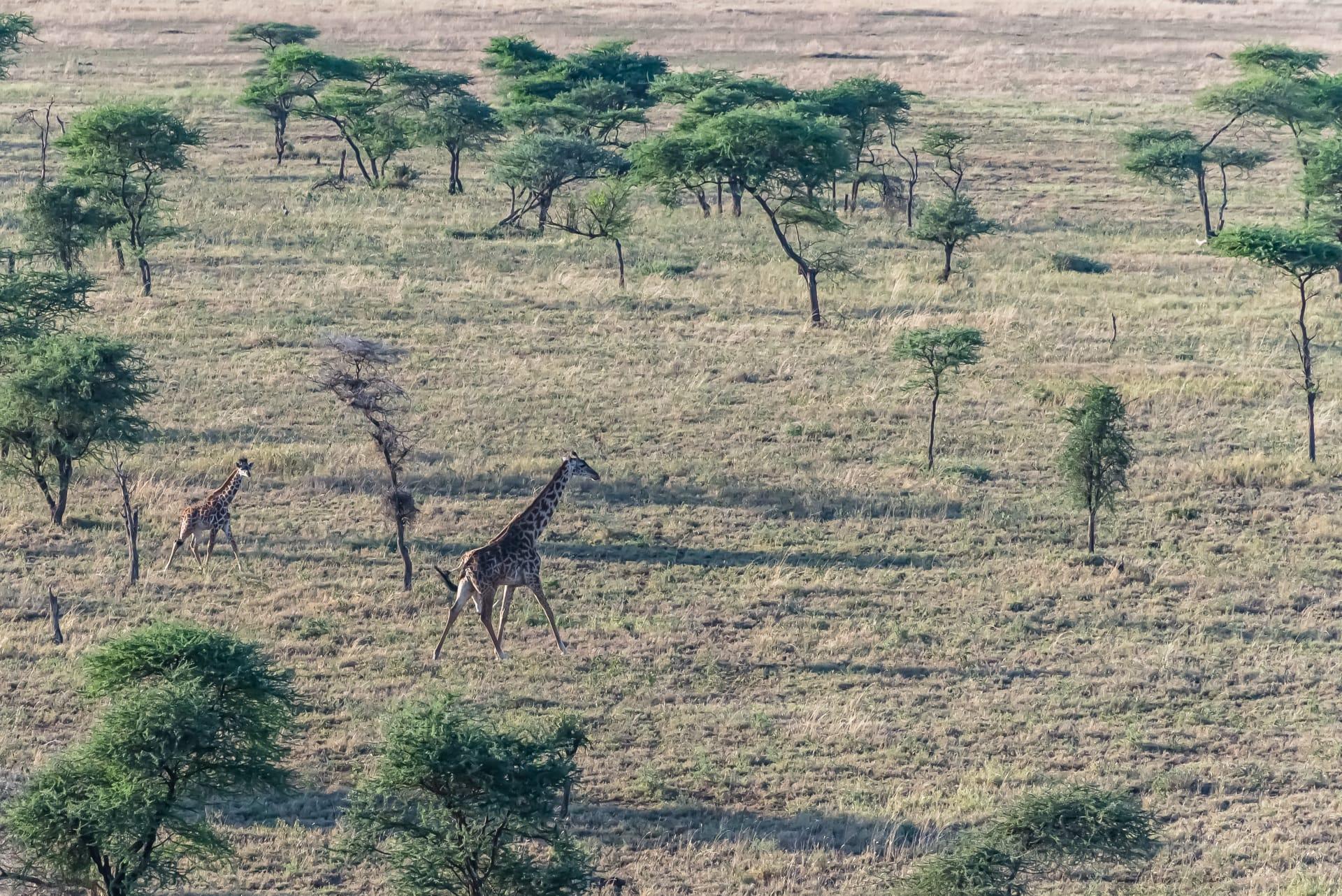1
Giraffes are the world's tallest mammals, thanks to their towering legs and long necks. A giraffe's legs alone are taller than many humans—about 6 feet (1.8 meters). These long legs allow giraffes to run as fast as 35 miles (56 kilometers) an hour over short distances and cruise comfortably at 10 miles (16 kilometers) an hour over longer distances. Interestingly, despite their long necks, giraffes have the same number of neck vertebrae as humans—just seven. Each vertebra is super-sized, measuring up to 10 inches (25 centimeters) long.
Giraffes have a unique pattern of spots that is as individual as a human fingerprint. These spots vary in size and shape and act as a thermal window, helping to regulate their body temperature. The spots are not just skin deep; they are also present on their underlying skin tissue. Moreover, the darkness of a giraffe's spots may indicate its age, as older giraffes tend to have darker spots. The patterns also provide excellent camouflage in their natural environment, blending in with the patterns of light and shadow in the savannah.

2
Giraffes are renowned for their long necks, which they use to reach leaves and buds in treetops that few other animals can reach. This height advantage also provides them with a broad view of the African savannah, alerting them to predators from far away. Interestingly, their necks are too short to reach the ground. As a result, they must awkwardly spread their front legs or kneel to reach the ground for a drink of water. This position is risky, as it makes them more vulnerable to predators like lions.
Their tongues are another remarkable feature. Giraffe tongues can be up to 18 inches (45 centimeters) long and are specially adapted to help them feed on trees with thorny defenses, like the acacia tree. The color of their tongue is a purplish-black, believed to help prevent sunburn while they feed under the African sun. Additionally, their saliva has antiseptic properties, helping to heal any wounds from thorns.

3
Giraffes are social animals and roam around in groups. These groups, called towers, typically consist of 10 to 20 members, although they can be larger. The composition of a tower can be fluid, changing as members leave and new ones join. Giraffes don't have strong social bonds like some other mammals, but they do engage in communal care for the young.
Despite their size, giraffes are relatively silent creatures. They use various sounds like moans, snorts, hisses, and grunts, but they often communicate non-verbally through postures and movements. Recent research suggests that giraffes may communicate at an infrasonic level, with sounds too low for humans to hear. This low-frequency communication could be useful over long distances, a handy trait for animals spread out over the vast savannah.

4
Giraffes have an unusual drinking method due to their height. To drink, they must splay their front legs and bend down in an awkward position, which can make them vulnerable to predators. Despite this, they need to drink only once every few days. They obtain most of their water from the moisture-rich plants they eat, reducing their need to drink from water sources.
Their heart is another marvel, weighing up to 25 pounds (11 kilograms) and measuring about 2 feet (0.6 meters) long. The giraffe's heart must generate almost double the normal blood pressure for a large mammal to maintain blood flow to the brain. This high blood pressure is counteracted by a very tight sheath of thick skin over their legs, which maintains blood pressure when they lower their heads to drink.

5
Giraffes are born tall. A newborn giraffe is about 6 feet (1.8 meters) tall at birth, making them taller than most humans from the moment they enter the world. Within a few hours of birth, calves can stand and even run. These early hours are crucial for their survival, as standing and moving quickly is essential to evade predators.
Lastly, giraffes play a critical role in their ecosystems. By feeding on tree leaves and buds, they help shape the African savannah by keeping tree growth in check. This browsing activity also promotes new growth of plants, which benefits other animals in the ecosystem. Moreover, their hoofed feet help to till the soil, aiding seed dispersal and promoting plant growth, making them essential contributors to their habitat's health and diversity.